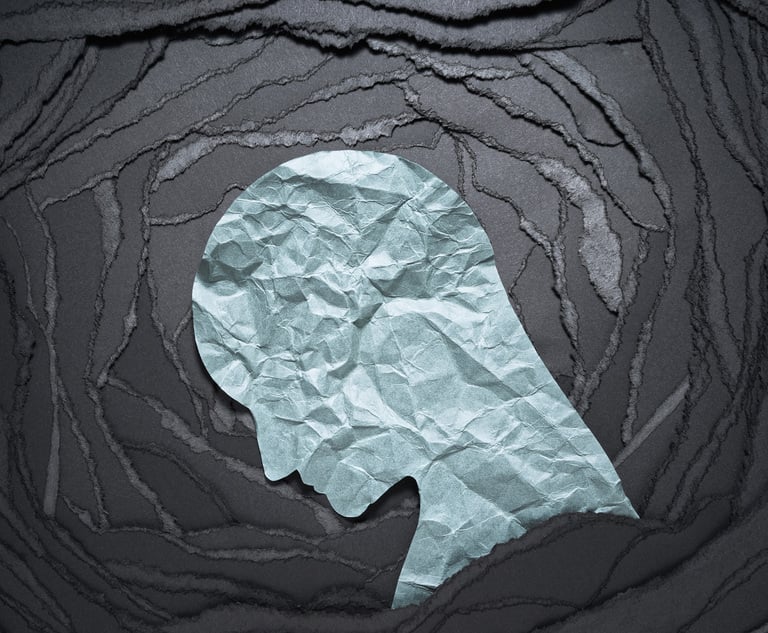Tech, Patent Holders Squaring Off Over FRAND Framework
The Federal Circuit will rule for the first time on how judges should analyze entire portfolios of standard-essential patents. Orrick, Wilson Sonsini, Williams & Connolly and Finnegan Henderson are among the firms lobbying the court as amici curiae.
August 05, 2019 at 02:32 PM
7 minute read
 Jeffrey Lamken of MoloLamken represents Ericsson before the Federal Circuit. Photo: Diego Radzinschi/ALM
Jeffrey Lamken of MoloLamken represents Ericsson before the Federal Circuit. Photo: Diego Radzinschi/ALMThe landscape for evaluating large portfolios of standard-essential patents could be transformed this week in a Washington, D.C., courtroom.
On Wednesday, the U.S. Court of Appeals for the Federal Circuit is set to hear arguments for the first time on the proper framework for determining a fair, reasonable and non-discriminatory (FRAND) rate when more than just a handful of patents are in play.
TCL Communication v. Ericsson pits a mid-market phone player against one of the world’s largest licensors of 2G, 3G and 4G/LTE wireless communication technology. Major tech companies have weighed in as amici curiae, including Google LLC, HP Inc., Toyota Motor Corp., Uber Technologies Inc., Interdigital Inc., Nokia Technologies Oy and Panasonic Corp.
TCL presents “an area of law ripe for clarification,” Finnegan, Henderson, Farabow, Garrett & Dunner partner James Barney writes for Toyota and other automakers. They’re calling on the court to strike a “delicate balance” between respecting patent holder rights on one hand and promoting widespread adoption of standardized technology on the other.
Orrick, Herrington & Sutcliffe partner John “Jay” Jurata, one of the authors of Panasonic’s brief, said last week he’s hoping the appellate court will encourage portfoliowide evaluations, which he said are preferable to litigating disputes patent by patent all over the globe. But he also believes TCL and U.S. District Judge James Selna of the Central District of California took a few too many shortcuts in setting Ericsson’s FRAND rate.
“These portfolio evaluations are good things,” he said, so he hopes the Federal Circuit will “strike the right balance without making it an unduly expensive affair.”
Standardization ensures that smartphones can be used with any wireless carrier, that laptops can connect with any coffee shop Wi-Fi, and that vehicles can connect with the internet and with charging infrastructure. Standard-setting organizations generally require patent holders who contribute technology to a standard to license patents essential to it on a FRAND basis. The idea is that patent holders should get a fair return on their R&D investment, but not be able to “hold up” implementers once they’re locked in to practicing the standard.
Patent owners and implementers usually work out FRAND rates in private negotiations, but occasionally they need to be resolved in court. The question in TCL is how a district judge should value an entire standard-essential patent portfolio that spans hundreds of patent families.
TCL, which markets phones under its name and under the Alcatel and BlackBerry brands, advocated a “top down” methodology that assesses the overall value of the standard, then allocates a percentage of the aggregate royalty to an SEP owner based on the relative value of its portfolio.
TCL said the standards are worth 6% of phone sales, based on statements Ericsson itself had made in years past. TCL then hired consulting firm Concur IP to survey the 153,000 patents and applications that had been declared essential to the 2G, 3G and 4G standards in 2015. Along with TCL’s experts they concluded that about 3,000 U.S. patent families were actually essential, with Ericsson owning 192.
TCL then assessed the importance and essentiality of Ericsson’s patents and argued that a reasonable royalty for Ericsson’s 4G SEPs was 16% per unit, and .21% for 2G/3G.
Ericsson argued it had negotiated comparable licenses with other phone makers at substantially higher rates, and that those are a much more reliable benchmark of its portfolio’s value. Using that model, it argued TCL should pay closer to 1% per phone.
In a 115-page order following a bench trial, Selna mostly accepted TCL’s top-down approach, but not its conclusion that Ericsson’s patents were low value. Instead, he adopted “a simple patent counting system which treats every patent as possessing identical value.” After considering Ericsson’s comparable licenses as a cross-check, Selna concluded that .45% was an appropriate FRAND rate for Ericsson’s 4G portfolio in the U.S., .3% for 3G, and .16% for 2G.
TCL, which had never taken a license to Ericsson’s 3G or 4G patents, was ordered to pay $16.4 million in back royalties through 2015.
Selna acknowledged his approach isn’t perfect. “The search for precision and absolute certainty is a doomed undertaking,” he wrote. “The court’s effort has been to determine whether each expert’s work has a reasonable level [of] reliability and convincing force that allows the court to make a judgment.”
The decision now has its critics at the Federal Circuit, starting with Ericsson. First, Concur IP estimated the aggregate SEPs while spending an average of only 20 minutes per patent family, writes Molo Lamken’s Jeffrey Lamken, who will argue for Ericsson on Wednesday. Concur acknowledged that it read patent claims only and not claim specifications.
Concur’s shortcuts and Selna’s “simple counting exercise” are the kinds of “rule-of-thumb” and “pseudo-scientific” methods that the Federal Circuit has rejected in the past, Lamken will argue. Ericsson emphasizes a passage from one of the Federal Circuit’s few other FRAND decisions, Ericsson v. D-Link Systems, in which the court said reasonable royalties must reflect “the incremental value that the patented invention adds.”
Ericsson also argues that it was entitled to a jury trial on many issues in the case.
Amicus InterDigital warns that the top-down method “would lead to systematic undercompensation of patent owners.” Wilson Sonsini Goodrich & Rosati partner David Steuer writes for the mobile technology company that, when there’s no evidence of “hold-up” or excessive “stacking” of individual patent owner royalties, courts should stick to “market-based evidence of comparable licenses.”
TCL, which markets low-cost phones under its own name and under the Alcatel and BlackBerry brands, argues that Ericsson itself was once “a vocal public advocate for calculating FRAND royalty rates using a ‘top-down’ approach.”
Sheppard, Mullin, Richter & Hampton partner Stephen Korniczky is set to argue for TCL that Selna counted Ericsson’s patents only after first concluding based on the evidence that Ericsson’s SEPs were average quality compared to other portfolios. “The result was a reasonable approximation of a fair and reasonable rate for a large and diverse patent portfolio, which is all the law requires,” Korniczky writes in TCL’s papers.
Google, HP, Hewlett-Packard Enterprise and the High Tech Inventors Alliance are urging the Federal Circuit to endorse the top-down framework as “one acceptable methodology for deriving portfolio FRAND rates.” Williams & Connolly partner Kevin Hardy writes that, while it might not be appropriate in every case, “placing rigid limits on the use of top-down analysis, as appellant proposes, has no theoretical basis.”
Panasonic, which is a major holder of SEPs but also markets computers, phones and automotive systems, is treading a middle ground. Jurata and Orrick partner Steven Routh argue in their brief that the top-down approach makes sense, but must be conducted with more rigor.
Jurata said last week he hopes the Federal Circuit will leave district judges with discretion to employ top-down, but make clear that “20 minutes a patent isn’t enough” to decide the universe of essential patents. And if judges can decide essentiality by counting, it will further incentivize patent holders to over-declare patents as essential, he said.
Panasonic and InterDigital also voice a pragmatic concern in their briefs: They don’t want to get stuck with the aggregate royalty Selna calculated based on Ericsson’s representations. “At minimum,” Routh and Jurata write in their brief, “this Court should make clear that any finding as to the total number of 2G, 3G, and LTE SEPs does not establish FRAND rates for SEP holders and licensees who were non-parties to the decision below.”
This content has been archived. It is available through our partners, LexisNexis® and Bloomberg Law.
To view this content, please continue to their sites.
Not a Lexis Subscriber?
Subscribe Now
Not a Bloomberg Law Subscriber?
Subscribe Now
NOT FOR REPRINT
© 2025 ALM Global, LLC, All Rights Reserved. Request academic re-use from www.copyright.com. All other uses, submit a request to [email protected]. For more information visit Asset & Logo Licensing.
You Might Like
View All
'A Death Sentence for TikTok'?: Litigators and Experts Weigh Impact of Potential Ban on Creators and Data Privacy

‘Extremely Disturbing’: AI Firms Face Class Action by ‘Taskers’ Exposed to Traumatic Content
5 minute read

Patreon Hit With Lawsuit for Allegedly Diverting Subscriber Data to Meta
Trending Stories
- 1South Florida Attorney Charged With Aggravated Battery After Incident in Prime Rib Line
- 2'A Death Sentence for TikTok'?: Litigators and Experts Weigh Impact of Potential Ban on Creators and Data Privacy
- 3Bribery Case Against Former Lt. Gov. Brian Benjamin Is Dropped
- 4‘Extremely Disturbing’: AI Firms Face Class Action by ‘Taskers’ Exposed to Traumatic Content
- 5State Appeals Court Revives BraunHagey Lawsuit Alleging $4.2M Unlawful Wire to China
Who Got The Work
J. Brugh Lower of Gibbons has entered an appearance for industrial equipment supplier Devco Corporation in a pending trademark infringement lawsuit. The suit, accusing the defendant of selling knock-off Graco products, was filed Dec. 18 in New Jersey District Court by Rivkin Radler on behalf of Graco Inc. and Graco Minnesota. The case, assigned to U.S. District Judge Zahid N. Quraishi, is 3:24-cv-11294, Graco Inc. et al v. Devco Corporation.
Who Got The Work
Rebecca Maller-Stein and Kent A. Yalowitz of Arnold & Porter Kaye Scholer have entered their appearances for Hanaco Venture Capital and its executives, Lior Prosor and David Frankel, in a pending securities lawsuit. The action, filed on Dec. 24 in New York Southern District Court by Zell, Aron & Co. on behalf of Goldeneye Advisors, accuses the defendants of negligently and fraudulently managing the plaintiff's $1 million investment. The case, assigned to U.S. District Judge Vernon S. Broderick, is 1:24-cv-09918, Goldeneye Advisors, LLC v. Hanaco Venture Capital, Ltd. et al.
Who Got The Work
Attorneys from A&O Shearman has stepped in as defense counsel for Toronto-Dominion Bank and other defendants in a pending securities class action. The suit, filed Dec. 11 in New York Southern District Court by Bleichmar Fonti & Auld, accuses the defendants of concealing the bank's 'pervasive' deficiencies in regards to its compliance with the Bank Secrecy Act and the quality of its anti-money laundering controls. The case, assigned to U.S. District Judge Arun Subramanian, is 1:24-cv-09445, Gonzalez v. The Toronto-Dominion Bank et al.
Who Got The Work
Crown Castle International, a Pennsylvania company providing shared communications infrastructure, has turned to Luke D. Wolf of Gordon Rees Scully Mansukhani to fend off a pending breach-of-contract lawsuit. The court action, filed Nov. 25 in Michigan Eastern District Court by Hooper Hathaway PC on behalf of The Town Residences LLC, accuses Crown Castle of failing to transfer approximately $30,000 in utility payments from T-Mobile in breach of a roof-top lease and assignment agreement. The case, assigned to U.S. District Judge Susan K. Declercq, is 2:24-cv-13131, The Town Residences LLC v. T-Mobile US, Inc. et al.
Who Got The Work
Wilfred P. Coronato and Daniel M. Schwartz of McCarter & English have stepped in as defense counsel to Electrolux Home Products Inc. in a pending product liability lawsuit. The court action, filed Nov. 26 in New York Eastern District Court by Poulos Lopiccolo PC and Nagel Rice LLP on behalf of David Stern, alleges that the defendant's refrigerators’ drawers and shelving repeatedly break and fall apart within months after purchase. The case, assigned to U.S. District Judge Joan M. Azrack, is 2:24-cv-08204, Stern v. Electrolux Home Products, Inc.
Featured Firms
Law Offices of Gary Martin Hays & Associates, P.C.
(470) 294-1674
Law Offices of Mark E. Salomone
(857) 444-6468
Smith & Hassler
(713) 739-1250






